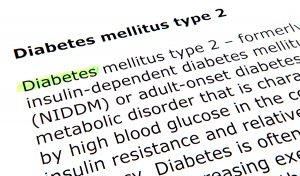Thanksgiving is Good for Your Health
This time of year, many people pause to give thanks for the good things in their life, but did you know that giving thanks is good for your health?
Having an optimistic outlook on life and using positive coping skills to manage stress has been linked in numerous studies to a longer and happier life. One of the common themes among people over age 85 who report very good to excellent health (in spite of dealing with chronic illnesses) is just that – thinking positive. Norman Vincent Peale, in his famous book, “The Power of Positive Thinking” said:
The way to happiness: Keep your heart free from hate, your mind from worry. Live simply, expect little, give much. Scatter sunshine, forget self, think of others. Try this for a week and you will be surprised.
But what if you are not naturally a positive thinker, but more of a “the glass is half empty” kind of person? The good news is that you can begin to change your thinking to improve your health. If you are not sure where to start, consider some of these suggestions as a place to begin:
Count your blessings. There is an old hymn that was sung when I was girl. When I felt down and discouraged, I would sing this song. It went like this:
When upon life’s billows you are tempest-tossed. When you are discouraged thinking all is lost. Count your many blessings every doubt will fly. Then you will be singing as the days go by. Count your blessings. Name them one by one. Count your many blessings. See what God has done.
Sometimes it helps to list what you are grateful for on paper. If you need a place to start, an excellent resource is the book “One Thousand Gifts: Reflections on Finding Everyday Graces” by Ann VosKamp. Through a series of 60 short devotionals, the author walks you through a journey to greater appreciation and thankfulness for all that you have.
Learn to be content with what you have. At the holidays, especially, it is easy to get caught up in thinking about what we wish we had and those things we don’t have. Try looking at it the other way- even in relationship to your health. For example, several years ago I had a catastrophic skiing accident, breaking my leg and tearing all of my knee ligaments. A subsequent blood clot complication meant that I couldn’t have surgery to repair the knee right away. After being in a wheelchair, on crutches, and in awful pain for months, with the help of countless hours of painful therapy and surgery a year later, I was finally able to walk almost normally again. Every day since then, when I am tempted to complain that I will never ski again, cannot kneel or squat, or do not have complete range of motion in that knee, I remind myself of those months when I couldn’t walk at all without help and how it felt to be completely dependent on others for everything. Each step I take, each walk in the sunshine, each little jaunt to the car, and the ability to ride a bicycle is a blessing. Every movement without pain is a bonus I never thought I would have again. Take time to recall when your situation was worse, and express joy that things are better than they were then.
Help others. One of the best ways to stop feeling sorry for yourself and cultivate an attitude of gratitude is to serve others, especially those who are less fortunate than you. Volunteer to help serve food at the community Thanksgiving dinner or participate in Operation Christmas Child by making a shoebox for a boy or girl in a developing country who would otherwise have no gifts. Take food to your local food pantry. Mow the lawn or shovel snow for your widowed neighbor. Invite the single and lonely person to share Thanksgiving dinner with your family. Buy gifts through the Angel Tree Ministry for children of those in prison. Adopt a needy family. Even if you are homebound, you can encourage others by simple but meaningful tasks such as sending birthday or holiday cards to the people in your church or community group. A simple encouraging phone call can change a person’s day. By giving to others, you focus on positive parts of life and meaningful activities that in turn promote your positive mental health.
So, this Thanksgiving, push the pause button for a little while and take a moment to reflect on what you are grateful for. You may just find that Thanksgiving is good for your health.




